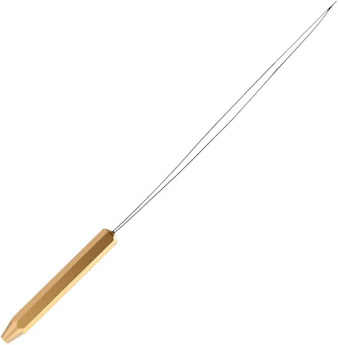Fishing with soft plastic lizards can be a great way to catch bass, especially during the spring and summer months when the bass are either looking to protect their beds from intruders or they are just looking for a meal.
These lures can mimic the movement and appearance of real lizards, making them an attractive target for guarding or hungry bass. To get the most out of your soft plastic lizards, however, it's important to rig them correctly.
Here are several of the most popular approaches to rigging soft plastic lizards when fishing for bass.
Texas Rig for Shallow Water: The Texas rig is a classic way to rig soft plastics including lizards when bass fishing. To set up the rig, slide a bullet weight onto the line ahead of the lizard; next tie an offset EWG worm hook to the end of your line using a Palomar knot. Thread the hook from the head and through the body of the lizard, bringing the hook point back through the lizard so the bait hangs straight, then bury the point back into the body (Tex-posed). This rig is weedless, making it ideal for fishing in heavy cover.
One thing to keep in mind when setting up the Texas rig: use the lightest possible weight thus giving the lizard a more natural appearance as it moves through the water.
Carolina Rig for Deeper Water: The Carolina rig is another popular option for rigging soft plastic lizards for bass fishing, especially in deeper water. This rig allows you to cover a lot of water quickly, making it ideal for searching for fish in open water. To set up the rig, slide a bullet or egg sinker and a bead onto the main line then tie a swivel to the end of your line. Next, tie a leader to the other end of the swivel and add your hook to the end of the leader then thread the hook through the body of the lizard as you would on a Texas rig.
If you're looking to use a similar presentation to the Carolina rig in shallow water, consider the down-scaled Petey rig (<- article link) which was created for just that purpose.
Split Shot Rig: The split shot rig is a versatile setup that involves using a light-wire drop shot or offset worm hook and a small split shot style weight providing the most subtle, shallow water presentations for soft plastic lizards. The drop shot hook is inserted into the nose of the lizard in open water areas while the worm hook is Texas rigged when fished around cover. The weight is placed on the line several inches in front of the hook. This rig is perfect for fishing in clear water or when the moody are being finicky or in a negative mood.
Jig Head Rig: Rigging a soft plastic lizard on a jig head is an excellent technique for targeting bass holding near the bottom or structure. Choose an appropriate weight jig head to match the depth and conditions you're fishing. Insert the hook into the lizard's nose and thread it through the body, ensuring the bait is securely attached. The jig head rig offers excellent control and enables you to explore different depths effectively, making it a reliable choice for probing drop-offs, ledges, or submerged cover. When fishing the jig head rigged lizard around heavy, submerged cover, consider using a snag resistant, Texas-style jig head rather than a more common open hook jig head.

Weightless Rig: The weightless rig is a great option for fishing in shallow water especially around shallow cover (grass, rocks, reeds, docks, etc.) during the warmer months. To set up the rig, simply insert a light-wire, offset EWG worm hook through the body of the lizard as you would on a Texas rig but without a weight. This rig allows the lure to have a more natural-looking action in the water or slowly retrieved across the surface of the water, often very effective for enticing cruising, shallow bass.
Though the five lizard rigging methods described above are the most common used by bass anglers, other rigging methods such as the drop shot, free rig, Ned rig, even as a trailer on spinnerbaits and chatterbaits.
No matter which rigging method you choose, soft plastic lizards are a great way to catch bass. They are versatile, effective, and can be used in a variety of water conditions. So next time you are out bass fishing, be sure to give soft plastic lizards a try.
















.jpg)






















.jpg)